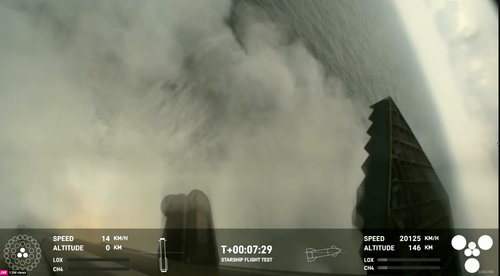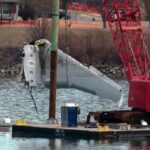
One day after Boeing's long-delayed crewed Starliner space capsule launched from the Cape Canaveral Space Force Station in Florida, SpaceX is preparing for the fourth test flight of the massive Starship rocket.
Hours ago, SpaceX's Elon Musk posted on X that the launch time of Starship is slated for 0720 Texas time (0820 ET) at Starbase in Boca Chica, Texas.
Launch tmrw morning at 7:20 Texas time pic.twitter.com/CJJTyPvT8L
— Elon Musk (@elonmusk) June 6, 2024
Starship is the most giant rocket ever built, standing nearly 400 feet tall when stacked with its "Super Heavy" booster. It surpasses the height of the Saturn V rockets that transported Apollo astronauts to the moon.
Targeting Thursday, June 6 for Starship’s fourth flight test.
— SpaceX (@SpaceX) June 4, 2024
A 120-minute launch window opens at 7:00 a.m. CT → https://t.co/bJFjLCiTbK pic.twitter.com/jWdhCAyk8I
Today's fourth test flight will continue advancing Starship's progress and heavily focus on a deeper re-entry into Earth's atmosphere.
Musk recently wrote on X that Starship's "main goal of this mission is to get much deeper into the atmosphere during re-entry, ideally through max heating."
Starship Flight 4, with many improvements, aiming to launch on Thursday!
— Elon Musk (@elonmusk) June 2, 2024
The main goal of this mission is to get much deeper into the atmosphere during reentry, ideally through max heating. https://t.co/8cE1dTQ9nw
Rocket blog Spaceflight Now provided more insight into the mishaps during test flight three and how systems were upgraded to ensure a deeper re-entry into Earth's atmosphere for today's test flight:
During Flight 3, the upper stage began to roll uncontrollably, preventing the vehicle from performing a relight of one of its six Raptor engines. However, thanks to its ability to connect to the Starlink satellite internet network, another part of SpaceX's business, the rocket was able to stream back high definition camera views showing its re-entry through a blanket of plasma.
"The lack of attitude control resulted in an off-nominal entry, with the ship seeing much larger than anticipated heating on both protected and unprotected areas," SpaceX said in a post-launch blog. "The most likely root cause of the unplanned roll was determined to be clogging of the valves responsible for roll control. SpaceX has since added additional roll control thrusters on upcoming Starships to improve attitude control redundancy and upgraded hardware for improved resilience to blockage."
Meanwhile, the Super Heavy Booster from the last flight also prematurely shut down six out of 13 Raptor engines used during the boostback burn, which remained offline when it attempted to perform a landing burn.
"The booster had lower than expected landing burn thrust when contact was lost at approximately 462 meters in altitude over the Gulf of Mexico and just under seven minutes into the mission," SpaceX stated. "The most likely root cause for the early boostback burn shutdown was determined to be continued filter blockage where liquid oxygen is supplied to the engines, leading to a loss of inlet pressure in engine oxygen turbopumps."
"Super Heavy boosters for Flight 4 and beyond will get additional hardware inside oxygen tanks to further improve propellant filtration capabilities."
All of these test flights are part of Starship's development process. The hope is to commission the world's largest rocket for moon and Mars missions by the end of the decade or the early 2030s.
* * *
Watch the launch event live here:
Update (0928ET):
Starship’s cameras are back about 37 minutes into the flight.
* * *
Update (0915ET):
External camera comes online in 11 mins
— Elon Musk (@elonmusk) June 6, 2024
* * *
Update (0858ET):
New milestone unlocked: Super Heavy booster landed in the Gulf of Mexico!
* * *
Update (0856ET):
Updates from SpaceX:
Starship’s Raptor engines have ignited during hot-staging separation. Super Heavy is executing the flip maneuver and boostback burn pic.twitter.com/TsdIKpqLJH
— SpaceX (@SpaceX) June 6, 2024
Hot stage jettison pic.twitter.com/J48QtQD1Ae
— SpaceX (@SpaceX) June 6, 2024
* * *
Update (0852ET):
SpaceX’s Starship launches from Starbase in Boca Chica, Texas, on its fourth flight.
Watch the launch event live here:
[embedded content]
* * *
One day after Boeing’s long-delayed crewed Starliner space capsule launched from the Cape Canaveral Space Force Station in Florida, SpaceX is preparing for the fourth test flight of the massive Starship rocket.
Hours ago, SpaceX’s Elon Musk posted on X that the launch time of Starship is slated for 0720 Texas time (0820 ET) at Starbase in Boca Chica, Texas.
Launch tmrw morning at 7:20 Texas time pic.twitter.com/CJJTyPvT8L
— Elon Musk (@elonmusk) June 6, 2024
Starship is the most giant rocket ever built, standing nearly 400 feet tall when stacked with its “Super Heavy” booster. It surpasses the height of the Saturn V rockets that transported Apollo astronauts to the moon.
Targeting Thursday, June 6 for Starship’s fourth flight test.
A 120-minute launch window opens at 7:00 a.m. CT → https://t.co/bJFjLCiTbK pic.twitter.com/jWdhCAyk8I
— SpaceX (@SpaceX) June 4, 2024
Today’s fourth test flight will continue advancing Starship’s progress and heavily focus on a deeper re-entry into Earth’s atmosphere.
Musk recently wrote on X that Starship’s “main goal of this mission is to get much deeper into the atmosphere during re-entry, ideally through max heating.”
Starship Flight 4, with many improvements, aiming to launch on Thursday!
The main goal of this mission is to get much deeper into the atmosphere during reentry, ideally through max heating. https://t.co/8cE1dTQ9nw
— Elon Musk (@elonmusk) June 2, 2024
Rocket blog Spaceflight Now provided more insight into the mishaps during test flight three and how systems were upgraded to ensure a deeper re-entry into Earth’s atmosphere for today’s test flight:
During Flight 3, the upper stage began to roll uncontrollably, preventing the vehicle from performing a relight of one of its six Raptor engines. However, thanks to its ability to connect to the Starlink satellite internet network, another part of SpaceX’s business, the rocket was able to stream back high definition camera views showing its re-entry through a blanket of plasma.
“The lack of attitude control resulted in an off-nominal entry, with the ship seeing much larger than anticipated heating on both protected and unprotected areas,” SpaceX said in a post-launch blog. “The most likely root cause of the unplanned roll was determined to be clogging of the valves responsible for roll control. SpaceX has since added additional roll control thrusters on upcoming Starships to improve attitude control redundancy and upgraded hardware for improved resilience to blockage.”
Meanwhile, the Super Heavy Booster from the last flight also prematurely shut down six out of 13 Raptor engines used during the boostback burn, which remained offline when it attempted to perform a landing burn.
“The booster had lower than expected landing burn thrust when contact was lost at approximately 462 meters in altitude over the Gulf of Mexico and just under seven minutes into the mission,” SpaceX stated. “The most likely root cause for the early boostback burn shutdown was determined to be continued filter blockage where liquid oxygen is supplied to the engines, leading to a loss of inlet pressure in engine oxygen turbopumps.”
“Super Heavy boosters for Flight 4 and beyond will get additional hardware inside oxygen tanks to further improve propellant filtration capabilities.”
All of these test flights are part of Starship’s development process. The hope is to commission the world’s largest rocket for moon and Mars missions by the end of the decade or the early 2030s.
* * *
Watch the launch event live here:
[embedded content]
Loading…








